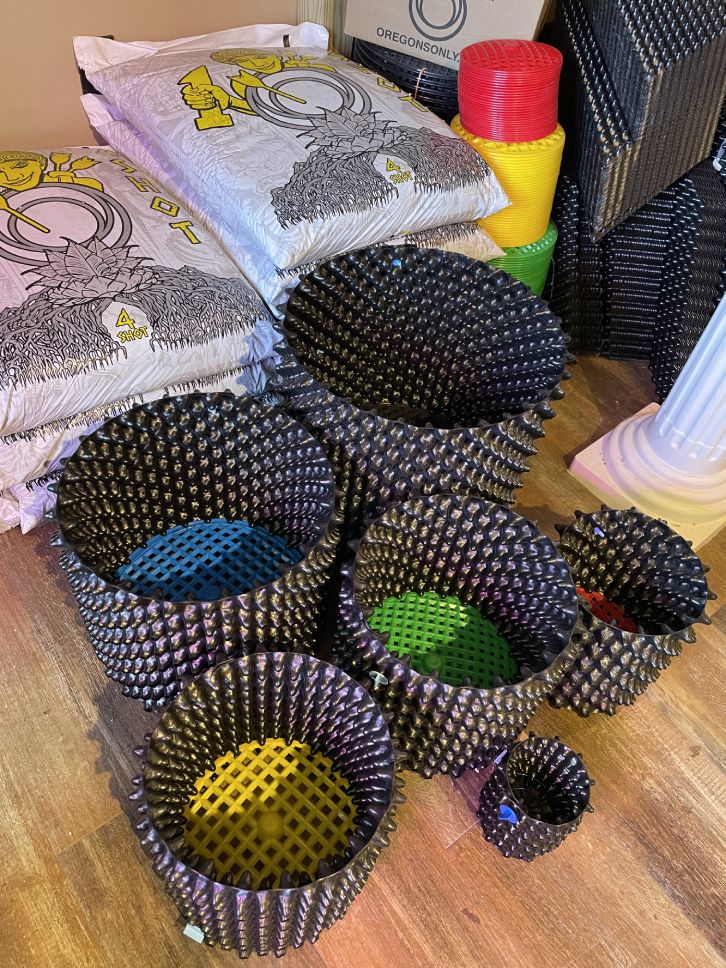Opening the Potential of Hydroponics: Recognizing Its Utilizes and Different Kinds
Hydroponics, an approach of growing plants without dirt, has actually amassed boosting attention for its potential to reinvent farming and cultivation techniques. As we browse through the complex landscape of hydroponic systems and techniques, it becomes obvious that each approach holds distinctive benefits and restrictions.
Advantages of Hydroponic Equipments

One more advantage of hydroponic systems is the capacity to grow plants in a smaller room. By getting rid of the demand for dirt, plants can be expanded up and down or in stacked systems, making the most of making use of available space. This is specifically useful in metropolitan areas or regions with minimal arable land. Hydroponic systems minimize the threat of soil-borne conditions and pests, as there is no dirt to harbor these threats. This leads to much healthier plants and decreases the demand for damaging pesticides, making hydroponic farming a more eco friendly and lasting choice.
Common Utilizes in Agriculture

Provided the effective water preservation and space-saving benefits of hydroponic systems, it is obvious that these ingenious farming methods have discovered common usages in different industries of agriculture. The controlled setting of hydroponic systems enables year-round cultivation, supplying a consistent supply of fresh fruit and vegetables no matter of outside weather condition problems.
Hydroponics is typically used for growing a variety of plants, consisting of leafy greens, tomatoes, cucumbers, strawberries, peppers, and herbs. In addition, hydroponic systems are utilized in study and academic setups to study plant growth, cultivation, and nourishment strategies.
Checking Out Various Hydroponic Techniques
Hydroponic systems provide a range of methods that cater to various plant kinds and farming objectives. Furthermore, the Ebb and Flow system, additionally recognized as the Flood and Drain system, intermittently floodings the plant origins with nutrient service, allowing for oxygenation throughout draining periods. Each of these methods showcases the versatility and efficiency of hydroponic systems in improving plant development and return.
Comparing Various Hydroponic Systems
Checking out the effectiveness and yield enhancement strategies in hydroponics leads us to compare different hydroponic systems available for plant farming. Each hydroponic system has its special attributes, benefits, and constraints, making it important for growers to select one of the most suitable system based on their specific requirements and constraints.
Among the most common hydroponic systems is the nutrient movie technique (NFT), where a thin film of nutrient service continually moves over the plant origins. This system is valued for its water performance and viability for expanding leafed greens and natural herbs. On the other hand, the deep water culture (DWC) system immerses plant origins straight right into the nutrient option, giving adequate oxygen and nutrients. The DWC system is cost-efficient and relatively straightforward, making it a preferred choice for newbies.
An additional prominent hydroponic system is the ebb and circulation (or flooding and drainpipe) system, which occasionally floods the plant roots with nutrient option prior to draining it. By understanding the differences between these hydroponic systems, farmers can make informed decisions to maximize crop yield and top quality.
Developments in Hydroponic Modern Technology
With developments in hydroponic technology, the farming sector is seeing a change in the direction of more lasting and reliable growing approaches. Innovations in hydroponic technology are transforming the way plants are expanded by taking full advantage of yields, conserving sources, and lowering environmental effect. One crucial technology is the growth of wise hydroponic systems that use sensors and automation to keep track of and adjust ecological conditions such as pH levels, nutrient focus, and light exposure in real-time. These systems enable precise control over growing problems, resulting in ideal plant growth and greater crop returns.
An additional significant development is the combination of upright farming methods with hydroponic systems, permitting for the growing of plants in stacked layers. This vertical method takes full advantage of space usage, making it optimal for urban atmospheres where land availability is restricted - The Indoor Earthworm. Additionally, the use of innovative LED lights systems customized to specific plant requirements has boosted energy performance useful site and enhanced growth prices in hydroponic arrangements
Advancements like these are driving the advancement of hydroponics, making it a highly attractive and lasting option for modern-day farming.
Final Thought
In conclusion, hydroponics uses numerous advantages in farming and has different techniques and check it out systems that can be used to maximize its potential. Advancements in hydroponic technology proceed to enhance effectiveness and sustainability in food production. By understanding the uses and various sorts of hydroponic systems, farmers and farmers can open the complete capacity of this innovative technique of expanding plants without dirt.
In addition, hydroponic systems enable for far better control over nutrient levels, pH balance, and environmental problems, leading to much healthier plants and higher yields.
